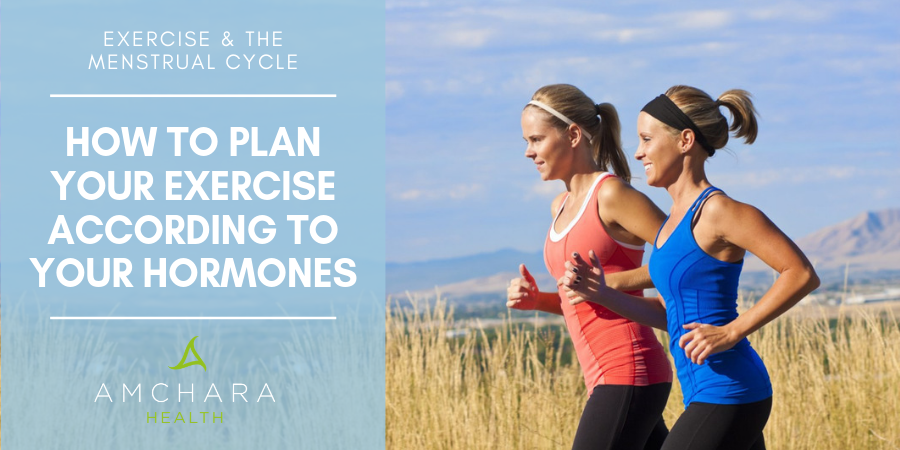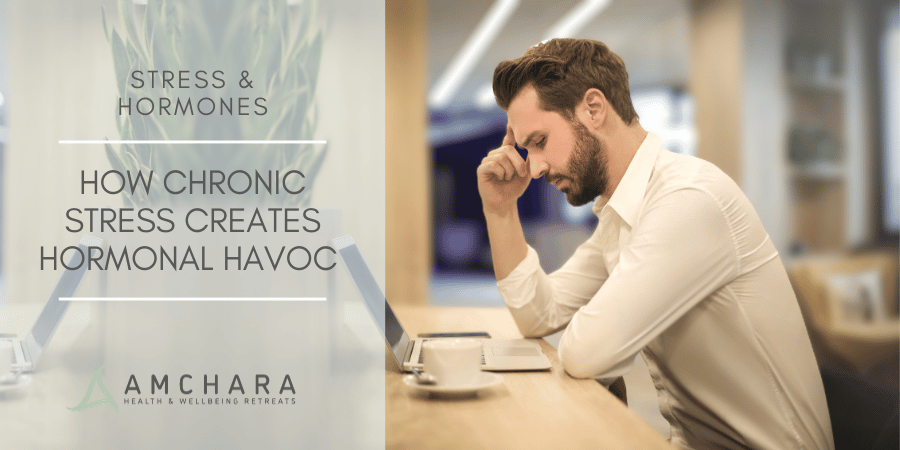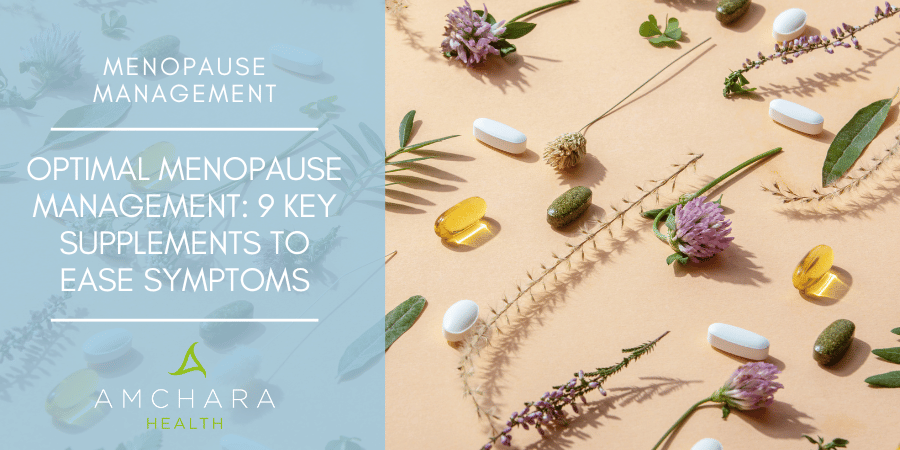Topics Covered in this article:
Every woman knows the changes in hormones which accompany your menstrual cycle can influence energy levels, mood and mental wellbeing.
But would it surprise you to learn your hormones also dictate what type of exercise you’re best suited to?
In this article, we’ll look at how your changing hormones can affect how you respond to exercise, and in turn, how to maximise your exercise regime according to your hormonal picture.
Exercise benefits hormones
Without a doubt exercise is beneficial for our health. Science is now recognising the whole-body benefits of regular exercise are much broader than simply to lose weight.
According to the NHS, adults should be doing at least 150 minutes moderate aerobic activity per week.
This means activities such as cycling, brisk walking, tennis or water aerobics.
Or this could be be 75 minutes of vigorous aerobic activity such as jogging, skipping or aerobics.
Strength exercises, such as weights, resistance bands, push-ups, sit ups, yoga, Pilates or heavy gardening on two or more days per week are also recommended.
However, only 20% of adults in the US attain the Government’s recommended physical activity levels, and data in the UK suggest large numbers of people are failing to meet the recommendations for physical activity, putting them at greater risk of various chronic health conditions (7).
Research shows maintaining an exercise regime can decrease all-cause mortality by over 40%.
Each extra minute spent on the treadmill resulted in a corresponding 7.9% decrease in mortality (1).
Exercise is directly beneficial to hormone health, too.
Moving more helps to improve circulation, detoxification and nutrient delivery, all of which are important for manufacturing and detoxifying hormones.
In studies, exercise, especially high intensity exercise, was found to decrease oestrogen levels (2).
Oestrogen levels which climb too high can be related to PMS and other menstrual disorders like fibroids and endometriosis.
Hormone balance and exercise
So, we know we need to exercise for optimal hormone health.
But the levels of our hormones can influence how best we benefit from exercise.
You may have already noticed at certain times of the month you’re able to train really well whereas at other times you lack motivation and energy.
Even when you do exercise, you don’t seem to see much benefit.
This can be due to changes in your hormone levels.
By becoming familiar with these effects, you can use these hormone changes to your advantage and improve the results from your training schedule over the month.
Monthly hormonal fluctuations
Let’s have a look at the different phases of the menstrual cycle and understand the hormonal changes which accompany them.
A menstrual cycle is approcximately 28 days in length, however many women have cycles which are longer or shorter than this timescale.
In this article, we’ll be talking about the hormonal changes which occur in women who aren’t taking hormonal contraception.
- Menstrual bleed
This is officially the start of your monthly cycle.
Your two main sex hormones – oestrogen and progesterone – will be at their lowest levels and because of this, energy levels can dip.
Many women simply want to curl up with a good book at this time, but on the other hand, and because we’re all different, some women feel full of energy.
At this time in the cycle, it’s sensible to ensure you’re having plenty of nutrient rich foods, pure water and healthy proteins and fats, with low GI complex carbohydrates.
All these can support energy metabolism and keep blood sugar levels steady.
- Follicular phase
Strictly speaking, this phase starts along with menstruation, but lasts about a week after you’ve stopped bleeding.
In the first few days of this phase, oestrogen levels slowly start to rise in preparation for ovulation.
Oestrogen and progesterone tend to have a seesaw relationship in the body, so during this phase progesterone remains low.
These hormonal changes often lead to increased energy and willpower and women can be more focused during this time.
You may find this a great opportunity to kick-start – and stick to – a healthy eating and exercise plan.
Studies show the climb in oestrogen means women’s bodies are more sensitive to insulin during this phase, which makes your body prefer to use dietary carbohydrates as a fuel source.
One of the roles of oestrogen is to build muscle and increasing levels of oestrogen can preferentially deliver energy to Type 1 muscle fibres, otherwise known as slow-twitch fibres, which favour endurance exercises.
Humans naturally use fat as a fuel source during lower-intensity exercise, and stored carbohydrates to fuel higher-intensity exercises and exercise that is long-term, such as higher-intensity endurance exercises.
This is because carbohydrate is more immediately available to the body than fat.
During the follicular phase, it’s therefore a great idea to focus on progress, because of this higher endurance capacity.
Many women often notice they have a higher threshold for pain during this phase.
So not only may you find you can push your body harder at this time, the preference for using carbohydrates may allow you to train more anaerobically, in other words at a higher intensity.
At this time in your cycle it can be good to include high intensity interval training (HIIT) and boot camp training, as well as squats, crunches, pull ups and bench presses.
It’s important to make sure you’re eating sufficient healthy slow-release carbohydrates during this time.
Research has found women’s basal metabolic rate decreases during menstruation and then declines to its lowest level by one week before ovulation, before rising again (3).
Intense workouts, along with an emphasis on carbohydrate as a fuel, may therefore help to avoid this decline in your resting metabolic rate.
- Ovulation
This is when oestrogen levels are highest, and it usually occurs about two weeks before the period for most women – around days 14 to 16.
After ovulation, metabolism and core body temperature will start to climb.
High levels of oestrogen often result in women feeling at their physical best and can lead to improved exercise performance.
This peak of oestrogen means this can be a good time to exercise with weights – heavier rather than lighter – in order to build muscle.
Research has found women who were ovulating showed a significant increase in handgrip and thigh muscle strength (4).
It’s a good idea to ensure you’re eating enough protein at this time.
Be careful to avoid injury, however. Increased oestrogen levels may also affect the metabolism of collagen, which can lead to increased joint hypermobility.
This can increase the risk of injury, meaning it’s extra important during this phase to warm up and cool down properly in order to protect yourself from injury (5).
Because high levels of oestrogen can cause PMS symptoms, it’s important oestrogen is detoxified as quickly as possible.
This is where being active can be crucial, as by increasing the speed with which the gut contents are moving, the efficient detoxification of oestrogen can be encouraged.
- Early luteal phase
The entire luteal phase lasts around 14 days, but we’ve split it up into the early and late luteal phase.
During the early luteal phase, oestrogen levels decline rapidly while progesterone levels rise.
This keeps your body temperature and metabolism high. In fact, during this phase, your metabolism rises steadily until the start of your next period. This means your body will burn calories faster.
Falling oestrogen levels can lead to increased insulin resistance.
This can mean that when you train, the body will use fat stores for energy more readily, as insulin resistance causes a reduction in the ease with which glucose can be used for energy.
It may be beneficial for you to reduce the amount of carbs in your diet.
Therefore lower-intensity exercises are a good choice at this time.
On the other hand, many women find they fatigue more quickly when exercising, or they’re simply more tired than usual.
Exercising first thing in the morning can be useful to make the most of the energy you have.
During the middle of this luteal phase, researchers have found a decrease in the ability of women to perform endurance exercise (6).
Recommended workouts for this part of your cycle include lower-intensity cardio training with moderate intensity strength work.
Yoga is great during this phase, particularly if you’re very fatigued, as researchers have found it may help reduce PMS because of its beneficial effects on stress, blood flow, breathing and posture.
- Late luteal phase
This is when your body is preparing for your period once again and is often the time in the menstrual cycle where it may be a struggle to find motivation for exercising and you may feel sluggish.
Oestrogen has fallen and progesterone starts to decline too.
Women often hold onto water during this phase. For many women, this can make training, especially HIIT, feel uncomfortable.
Energy levels may fall in tandem with decreasing oestrogen and progesterone levels. It’s important during this time to keep moving in order to encourage blood flow.
Walking, cycling, running, swimming and yoga are good options.
Finally, when oestrogen levels decrease, pain threshold decreases in tandem.
Meditation or breathing exercises during this time can increase your pain threshold.
How to fit exercise into your life
Wherever you are in your cycle, it can be hard to find both the time and motivation to fit exercise into your life.
Try the following ideas:
- Exercise can be categorised into strength, endurance, balance and flexibility. It’s best to choose a variety of different exercise to benefit all body systems. Choose from jogging, brisk walking, jumping on a rebounder, stretching, yoga, Pilates, aerobics – the list is endless. Programmes such as Parkrun and Couch to 5K are great.
- Try keeping a fitness journal to track your cycle as well as your energy levels during and after different types of exercise. This may help you to see at what times of your cycle you have the most or the least energy. Several apps are now available which help to do this to you. Some even synch your mood and menstrual cycles.
- Don’t stay at your desk for longer than an hour without a break – set an alarm if you need to remind yourself.
- Get off the bus a stop or two earlier and walk the rest of the way or leave the lift a floor or two before your floor and take the stairs instead.
- Join a dance class – choose something you enjoy and will look forward to.
You should feel energised after exercise, not exhausted. Try to remember that satisfied, happy feeling after exercise.
Use this to motivate you when you don’t feel like exercising and set realistic goals so you can fit exercise into your day.
Conclusion
Increasing exercise will benefit your health in so many ways and taking into account your body’s changes over the month will not only help you understand how your body’s ability naturally fluctuate, but may help keep you motivated too.
If you feel you would benefit from a personalised health consultation, which will tailor not only your activity levels but also your diet with your unique hormonal makeup, contact us for a free initial consultation.
We’re dedicated to providing you with both insightful information and evidence-based content, all orientated towards the Personalised Health approach.
Did you find this article useful?
We would love to know your thoughts.
With your comments let’s continue the conversation.
Let us know your top exercise tips.
By Cathy Robinson BScDipNutMed
READ THIS NEXT:




